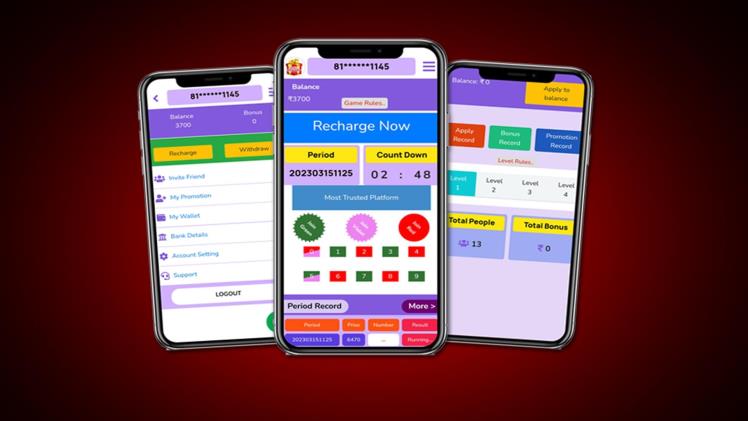Cultural Myths and Lucky Colors: Regional Beliefs in Prediction Gaming

Color prediction games, with their vibrant palettes and rapid-fire mechanics, have become a global phenomenon. While the core gameplay is often simple—selecting a color and awaiting the outcome—the cultural meanings attached to those colors are anything but. Across continents and communities, colors carry deep symbolic weight, shaped by centuries of mythology, tradition, and spiritual belief. In the context of prediction gaming, these associations influence not only how players choose but also how they interpret wins, losses, and patterns.
As these games expand into diverse markets, understanding the cultural myths and regional beliefs surrounding color becomes essential—not just for developers seeking to localize content, but for players navigating the psychological terrain of chance and superstition.
Red: The Universal Symbol of Power and Fortune
Few colors carry as much global significance as red. In many Asian cultures, particularly in China and India, red is synonymous with prosperity, celebration, and divine energy. It is the color of weddings, festivals, and sacred rituals. In Chinese culture, red envelopes filled with money are gifted during Lunar New Year to bring luck and ward off evil spirits. In Hinduism, red is associated with Shakti, the feminine divine force, and is often worn during auspicious ceremonies.
In prediction games, red is frequently perceived as a “lucky” color. Players from these regions may gravitate toward red during important rounds or after a losing streak, believing it can reverse their fortune. This belief is not purely aesthetic—it’s rooted in cultural memory and emotional resonance.
However, in Western contexts, red can also symbolize danger, aggression, or warning. This duality creates an interesting tension in global platforms like jalwa game colour prediction app, where the same color may evoke hope in one player and caution in another.
Green: Nature, Renewal, and Sometimes Money
Green’s symbolism varies widely across cultures. In Islamic traditions, green is considered the color of paradise and is often associated with peace and spiritual growth. In Western societies, green is linked to nature, renewal, and financial prosperity—hence the phrase “in the green” to signify profit.
In Latin American cultures, green may represent fertility and abundance, while in some African traditions, it is tied to the earth and ancestral wisdom. In prediction games, green is often seen as a “safe” or “neutral” choice, especially in regions where it carries positive connotations.
Interestingly, in some East Asian contexts, green can have negative associations. In Chinese culture, for example, a man wearing a green hat implies infidelity in his relationship—a superstition that may subtly influence color preferences in gaming environments.
Violet and Purple: Mystery, Royalty, and the Supernatural
Violet and purple are less common in traditional color symbolism but carry powerful meanings where they do appear. In Western history, purple was the color of royalty and nobility, due to the rarity and cost of purple dye. In spiritual contexts, it is often associated with mysticism, transformation, and the crown chakra in Indian yogic traditions.
In prediction games, violet is sometimes used as a wildcard or high-risk, high-reward option. Its rarity in nature and cultural associations with the unknown make it a compelling choice for players seeking to break patterns or test fate. In some cultures, purple is also linked to mourning or solemnity, adding another layer of complexity to its interpretation.
Rituals, Superstitions, and Regional Playstyles
Beyond color symbolism, many players bring rituals and superstitions into their gaming habits. In parts of South Asia, players may light incense or recite mantras before engaging in prediction games. In East Asia, numerology and Feng Shui principles may guide not only color choices but also the timing of play. For example, a player might avoid betting during certain lunar phases or favor colors that align with their birth element.
In Latin America, where vibrant colors are celebrated in festivals and religious iconography, players may choose colors based on seasonal associations or family traditions. In Africa, where oral storytelling and ancestral reverence are central, color choices may reflect tribal symbolism or generational beliefs.
These rituals are not mere quirks—they are expressions of cultural identity. They transform prediction gaming from a mechanical activity into a personal, even spiritual, experience.
The Developer’s Dilemma: Designing for Diversity
For game developers, the global reach of prediction games presents both an opportunity and a challenge. A color that boosts engagement in one region may alienate players in another. To navigate this, some platforms offer customizable color palettes or region-specific themes that align with local festivals or beliefs.
Others incorporate storytelling elements that reflect cultural myths, allowing players to engage with familiar narratives while playing. This not only enhances immersion but also fosters a sense of respect and inclusion.
Conclusion: More Than Just a Guess
Color prediction games may appear simple on the surface, but they are deeply embedded in the cultural fabric of the communities that play them. Every color choice is a reflection of belief, memory, and identity. As these games continue to evolve, acknowledging and honoring the cultural myths and regional meanings behind color will be key to creating experiences that are not only entertaining but also meaningful.
In the end, prediction gaming is not just about chance—it’s about the stories we bring to the table, the symbols we trust, and the colors we believe in.





